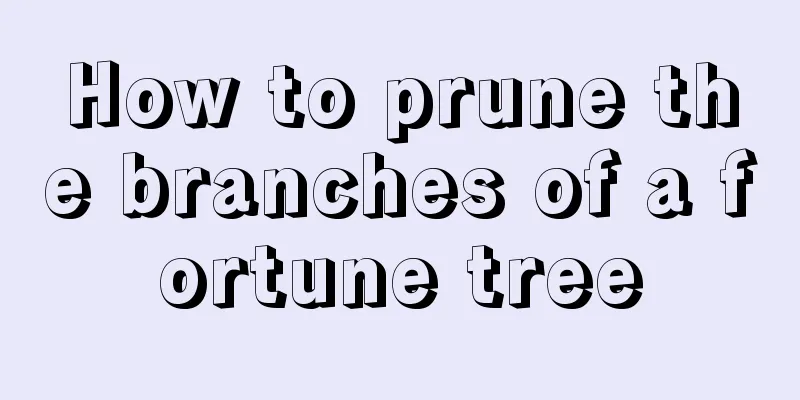Planting, management and fertilization of loquat trees

|
Loquat is a common variety in the fruit market. When ripe, the fruit is golden yellow, the flesh is sweet and sour, and the taste is excellent. Its unique taste is deeply loved by consumers, and it has broad market prospects for cultivation. Let's talk about the planting, management and fertilization of loquat trees. 1. Garden Selection Choose a plot with deep soil, not prone to water accumulation, groundwater level 1m below the ground, pH value 5.5~6.5, and good drainage, and build irrigation and drainage facilities in advance. 2. Planting Transplanting is best completed before the spring shoots sprout in February. It is advisable to use nutrient bag seedlings, and the grafting site should be well healed, the growth should be strong, and the root system should be complete. The planting density should be 3.5~4.5m between plants and 4.5~5m between rows, with 29~42 plants per mu. Dig planting holes with a depth of 0.8m and a side length of 1m 1 to 2 months before planting, and apply sufficient base fertilizer. When planting seedlings, plant them vertically, then compact the soil, cover with a small amount of fine soil, make the root neck 2~3cm lower than the ground in the tree tray, water the roots or thinly sprinkle the Sea Elf biostimulant, and then cover the tree tray. 3. Sapling Management Apply fertilizer at the right time: start applying top dressing after the young trees sprout new shoots. You can apply Sea Elf biostimulant + high nitrogen compound fertilizer ; after that, apply two fertilizers to each shoot. The basic requirement is to apply thin fertilizers frequently. Tree shape management: Shorten the main trunk at a height of 40 to 60 cm, leaving 3 to 4 main branches, and add 2 to 3 secondary branches on each main branch. Use bamboo poles, wooden sticks or ropes to support, pull or hang the branches to change their direction or increase their angle. Expand the hole and improve the soil: Starting from the year after planting, the deep soil outside the planting hole should be improved, usually combined with heavy fertilization in summer and winter. 4. Fruit Tree Management Fertilization management: After fruit thinning, apply spring shoot and fruit-strengthening fertilizer, such as balanced compound fertilizer + Sea Elf biostimulant, and combine it with foliar spraying of phosphorus and potassium source pool + urea + boron source pool; apply shoot regulating fertilizer in summer shoot period, mainly quick-acting fertilizer , to supplement the nutrients consumed by fruit growth, restore tree vigor, promote the growth of summer shoots and root system, and good differentiation of flower buds; in autumn, apply sufficient organic fertilizer + mineral element fertilizer + Huo Tu Jun compound bacterial agent to provide the necessary nutrients for flowering and improve the plant's ability to resist pests and diseases and low temperatures in winter. Water and fertilizer management: Water should be applied in time during the young fruit development period, the late summer shoot growth period, the summer branch extension branch growth period, and the flower spike formation period. Drain water in time during continuous rainy days to avoid waterlogging in the orchard. Pruning and shaping: Winter and spring pruning should be carried out before February in combination with fruit thinning to remove weak branches, dense branches, overgrown branches, and dead branches; summer pruning should be carried out during the fruit-picking period to shorten leafy fruiting branches to retain 5 to 7 leaves and remove leafless fruiting branches or fruit axes. After fruit picking, some old fruiting branches should be cut back and strong nutrient branches should be shortened. Flower and fruit management: includes several parts such as flowering promotion, flower and fruit thinning, and fruit bagging. Flower promotion can be achieved by choosing methods such as fertilizer and water, ring cutting, and drugs according to the tree vigor level; flower spike thinning should be done when the flower spikes are obvious but have not yet bloomed, leaving 2 to 3 flower spikes on 5 branches and 1 to 2 flower spikes on 3 branches, and the leaf-to-fruit ratio should be maintained at 20:1; fruit thinning should be done before the young fruits develop rapidly and after the threat of frost damage is lifted, to remove broken and low-quality fruits, and it is appropriate to leave 4 to 5 fruits per spike; fruit bagging should be done immediately after thinning to reduce diseased and insect-infested fruits, sun-burned fruits, etc., and to prevent bird damage. 5. Disease and Pest Control The main diseases of loquat include spot disease, angular spot disease, gray spot disease, anthracnose, sunscald, etc. The main insect pests include mulberry beetle , pear borer, scale insects, yellow caterpillars, stink bugs, mites, etc. That’s it |
<<: Planting technology and management of taro
>>: Cucumber cultivation technology and management methods
Recommend
How to repair the root of the mage
Does the mage need to repair the roots? The Maste...
Can cherry blossoms be transplanted in autumn? Transplanting season and precautions
Can cherry blossoms be transplanted in autumn? Ch...
What season is suitable for planting or transplanting roses? What month is the best for planting roses?
When planting roses, you can choose a mixture of ...
The difference between the rich coconut and the pocket coconut
1. Morphological characteristics 1. Rich coconut....
Pest and disease control of valerian
Major diseases This kind of grass is likely to en...
How often should I change the water of the plant and how should I trim its leaves?
1. Water change frequency The water of the water-...
Can the fortune tree recover from freezing? How to water it when it is frozen?
1. Can you recover? Generally speaking, if the br...
When is the best time to plant lilies?
1. Autumn Planting August to September in autumn ...
What is the best way to feed goslings?
Goslings refer to newly hatched goslings. This pe...
What should I do if the leaves of the jade fan grow crooked?
Solution If the leaves on both sides are not symm...
Yuanhu planting conditions and climate requirements of the planting area
Yuanhu planting conditions Yuanhu prefers a warm ...
Planting and maintenance of papaya trees
Papaya is also called wrinkled papaya. The flesh ...
What kind of pot and soil is suitable for the dripping Guanyin?
1. What kind of basin is suitable? 1. Moderate si...
What to do if the goldfish plant grows too tall
1. Treatment method There are two ways to deal wi...
How to distinguish Huang Li and Ming Yue
Difference 1: Look at the thickness The leaves of...









